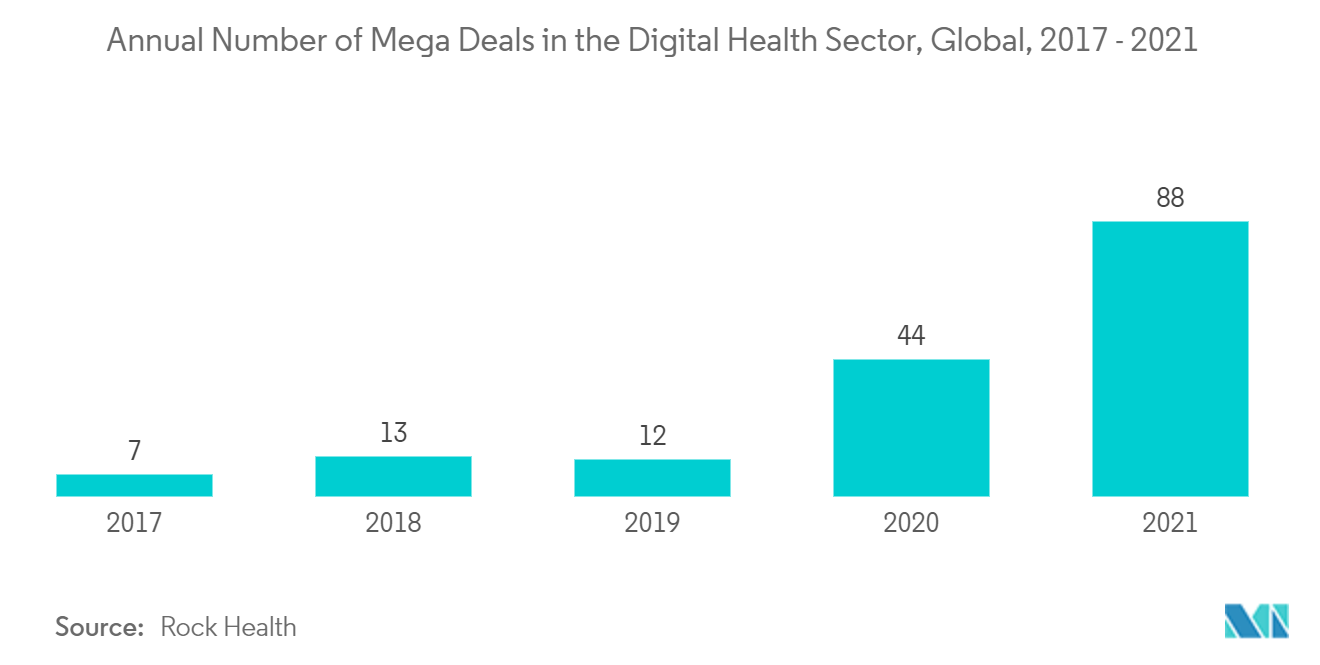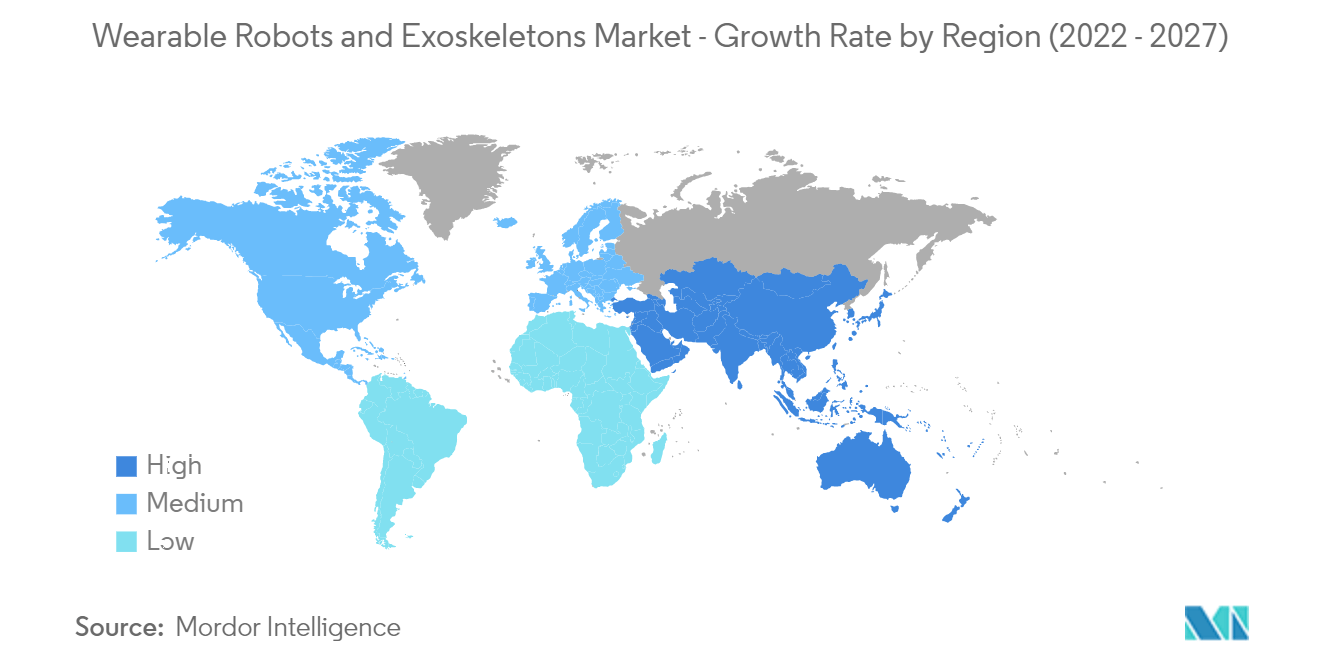Market Trends of Wearable Robots and Exoskeletons Industry
This section covers the major market trends shaping the Wearable Robots & Exoskeletons Market according to our research experts:
Healthcare is Expected to Hold a Significant Share
- Exoskeletons have increasing applications in medical industries ranging from physiotherapy to emergency services. For example, GenElek Technologies, a Delhi-based startup, provides a robotic support system that aids people suffering from stroke, paralysis, spinal cord injury (SCI), or other neurological conditions. The exoskeleton assists disabled people in walking again. It will help them become self-reliant and independent, which will benefit them physically and mentally. These advancements mentioned above are expected to drive the healthcare market.
- According to a report of the Rehabilitation Council of India, every year, more than 15,000 people lose their ability to walk either due to a spinal injury or stroke in India, which translates to 15 new cases per million every year, which provides an opportunity for local companies to provide an externally worn robotic and exoskeleton support system that enhances a human's limbic capabilities.
- Further, many players in the market are constantly trying to innovate products for people in the Healthcare industry and get the necessary approval. For instance, ReWalk Robotics, a manufacturer of robotic medical devices for individuals with lower limb disabilities, announced that the US Food and Drug Administration had cleared its ReStore soft exo-suit system for sale to rehabilitation centers across the United States.
- Moreover, some smaller companies have also emerged. For instance, Japan-based Archelis Inc. showcased the ArchelisFX exoskeleton, which derives from the Japanese word for "walkable chair." The device is designed for several scenarios, including back pain and recently undergoing surgery. The company said it would be available to rent or buy for around USD 5,000.
- In January 2021, suitX, a California-based innovator in exoskeleton technologies, announced the launch of a novel wearable exoskeleton, shieldX. It is made for the healthcare personnel required to wear heavy anti-radiation aprons. ShieldX removes 100% of the weight of a heavy anti-radiation apron from the user's shoulders and spine. ShieldX aims to reduce neck and back injuries linked to these heavy aprons shortening careers and limiting activities outside of work.

Asia Pacific is Expected to Account for the Largest Market Share
- Asia-Pacific is the leader in the R&D of wearable robot technology. South Korea and Japan are specifically leading in the R&D of the market. For instance, in April 2021, a South Korean research team from the Korea Institute of Machinery and Materials developed a wearable robot technology, a suit-type wearable device, that can be used for a variety of physical tasks from delivery to construction work. It can be attached to the arm, thigh, and other body areas for supporting muscles.
- South Korea has always been the hub for the manufacture of robotics and automation technologies. The focus on R&D and government expenditure on innovative technologies were significant factors for the advancement of wearable robotics in the country. The private sector of the country is also actively expanding its technologies and applications range related to wearable robots and exoskeletons.
- For instance, in June 2021, Samsung Electronics Co. announced to commercialize of a wearable robot for healthcare by the end of 2021. This South Korean tech giant is delving into the robotics sector as one of its major growth drivers. According to the company, it has plans to introduce a wearable robot that helps users that have trouble standing up, walking, or running and can also be used as a fitness device. This wearable robot is expected to be priced between KRW 5 million and KRW 10 million, but the company may bring the price down to make it more affordable.
- Wearable robots and exoskeleton market players are increasingly investing in the Asia-Pacific region. For instance, in April 2021, Ekso Bionics, an industry leader in the exoskeleton market with a presence in Hong Kong, announced a partnership with Royal Rehab in Australia, further expanding the use of the company's robotic exoskeleton across Asia-Pacific.
- Militaries in the region are also developing exoskeleton robots for their troops. For instance, in October 2021, Taiwan launched the first generation of a battery-powered exoskeleton suit that can improve the physical endurance of soldiers and increase mobility in various military operations.

